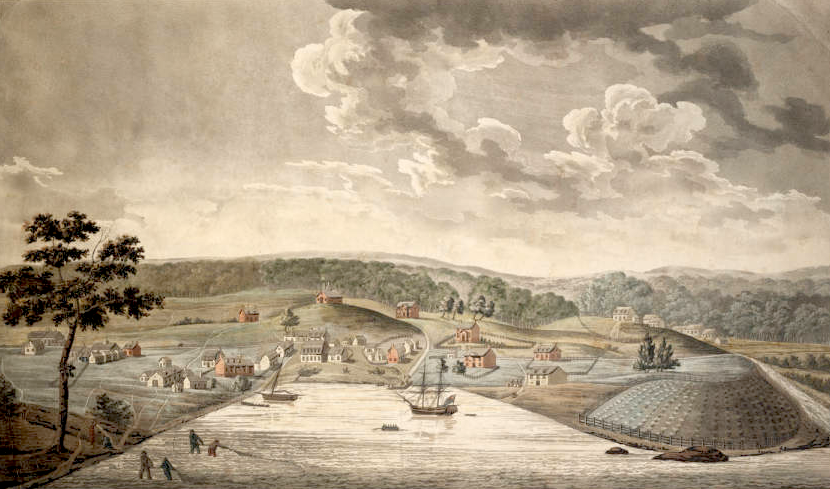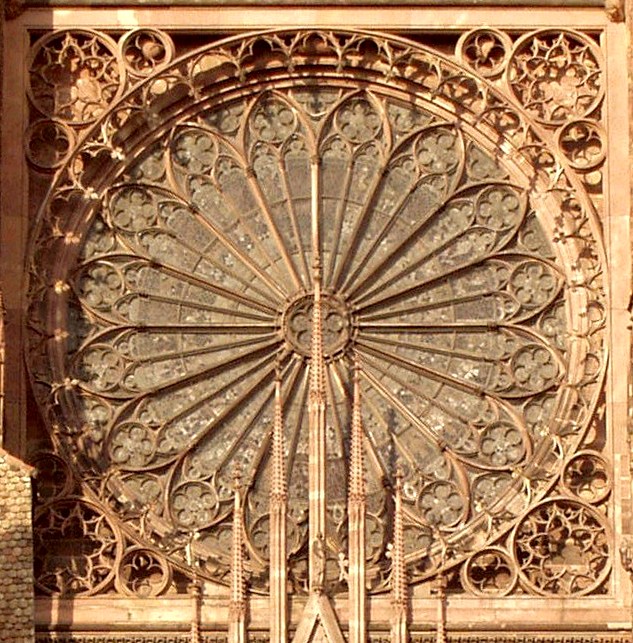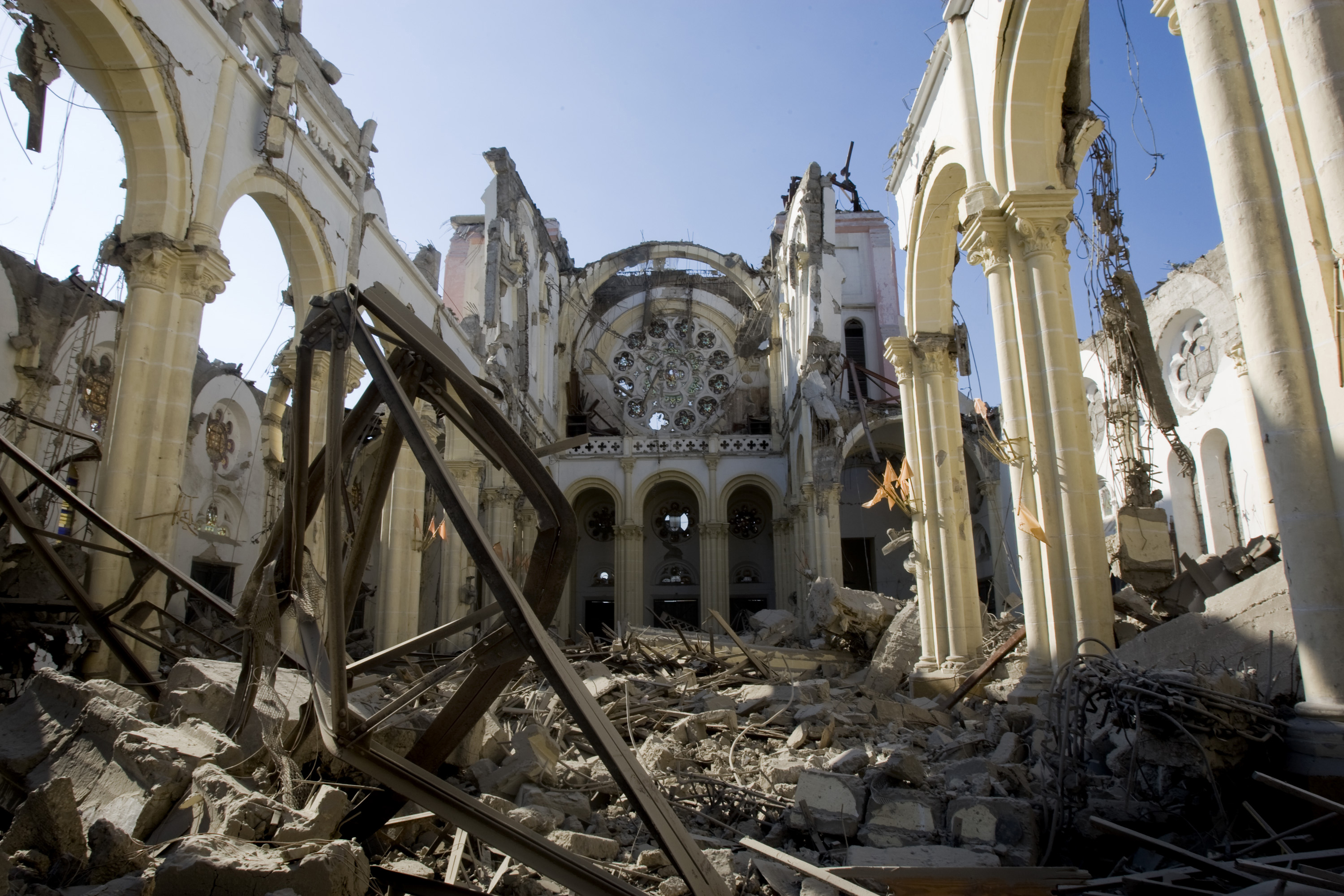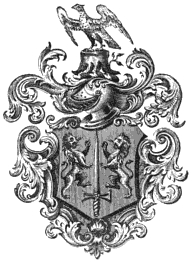|
St. Mary's Seminary Chapel
St. Mary's Seminary Chapel is a Catholic church located at 600 North Paca Street (off Druid Hill Avenue and modern Martin Luther King, Jr. Boulevard) in the Seton Hill neighborhood of Baltimore, Maryland. It was built in the Neo-Gothic style. It was built from 1806 through 1808 by French architect J. Maximilian M. Godefroy for the French Sulpician priests of St. Mary's Seminary. Godefroy claimed that his design was the first Gothic building in America. History St. Mary's Seminary (now St. Mary's Seminary and University), founded in 1791, is the oldest Catholic seminary in the United States and the site also included a secular St. Mary's College, from 1805-1852. Godefroy also designed in Baltimore, the First Unitarian Church at West Franklin and North Charles Streets during 1817 and the Battle Monument, constructed 1815-1822 in the old Courthouse Square at North Calvert Street, between East Lexington and East Fayette Streets, commemorating the city's dead during the Bri ... [...More Info...] [...Related Items...] OR: [Wikipedia] [Google] [Baidu] |
Baltimore, Maryland
Baltimore is the List of municipalities in Maryland, most populous city in the U.S. state of Maryland. With a population of 585,708 at the 2020 United States census, 2020 census and estimated at 568,271 in 2024, it is the List of United States cities by population, 30th-most populous U.S. city. The Baltimore metropolitan area is the Metropolitan statistical areas, 20th-largest metropolitan area in the country at 2.84 million residents. The city is also part of the Washington–Baltimore combined statistical area, which had a population of 9.97 million in 2020. Baltimore was designated as an Independent city (United States), independent city by the Constitution of Maryland in 1851. Though not located under the jurisdiction of any county in the state, it forms part of the central Maryland region together with Baltimore County, Maryland, the surrounding county that shares its name. The land that is present-day Baltimore was used as hunting ground by Paleo-Indians. In the early 160 ... [...More Info...] [...Related Items...] OR: [Wikipedia] [Google] [Baidu] |
Rose Window
Rose window is often used as a generic term applied to a circular window, but is especially used for those found in Gothic cathedrals and churches. The windows are divided into segments by stone mullions and tracery. The term ''rose window'' was not used before the 17th century and comes from the English flower name rose. The name "wheel window" is often applied to a window divided by simple spokes radiating from a central boss or opening, while the term "rose window" is reserved for those windows, sometimes of a highly complex design, which can be seen to bear similarity to a multi-petalled rose. Rose windows are also called "Catherine windows" after Saint Catherine of Alexandria, who was sentenced to be executed on a spiked breaking wheel. A circular window without tracery such as are found in many Italian churches, is referred to as an ocular window or Oculus (architecture), oculus. Rose windows are particularly characteristic of Gothic architecture and may be seen in all th ... [...More Info...] [...Related Items...] OR: [Wikipedia] [Google] [Baidu] |
Santo Domingo
Santo Domingo, formerly known as Santo Domingo de Guzmán, is the capital and largest city of the Dominican Republic and the List of metropolitan areas in the Caribbean, largest metropolitan area in the Caribbean by population. the Distrito Nacional, city center had a population of 1,029,110 while its Metropolitan area, the Greater Santo Domingo, had a population of 4,274,651. The city is coterminous with the boundaries of the Distrito Nacional (D.N.), itself bordered on three sides by Santo Domingo Province. Santo Domingo was founded in 1496 by the Spanish Empire and is the oldest continuously inhabited European colonization of the Americas, European settlement in the Americas. It was the first seat of Spanish colonial rule in the New World, the Captaincy General of Santo Domingo. Santo Domingo is the site of the first university, cathedral, castle, monastery, and fortress in the New World. The city's Ciudad Colonial (Santo Domingo), Colonial Zone was declared as a World Herit ... [...More Info...] [...Related Items...] OR: [Wikipedia] [Google] [Baidu] |
Catholic Church In Haiti
The Catholic Church in Haiti is part of the worldwide Catholic Church, under the spiritual leadership of the pope, the Curia in Rome and the Conference of Haitian Bishops. There are ten dioceses including two archdioceses. The national patron saint of Haiti is Our Mother of Perpetual Help. Colonisation and the first wave of evangelization (1511–1806) "The Dioceses of Santo Domingo and Concepción de la Vega were founded in 1511, and the island of Hispaniola that Haiti shares with the Dominican Republic, was divided between these bishoprics. In 1527 Concepción was incorporated into Santo Domingo, which remained the only diocese until 1862. Many regular clergy came with the French into the French territory, especially the Dominicans and the Capuchins. The Dominicans devoted themselves especially to the mission in the western part of the colony, and were for a time supported therein by other orders and secular priests."Text has been adapted from: Reinhold, G. (1910). "Haiti" ... [...More Info...] [...Related Items...] OR: [Wikipedia] [Google] [Baidu] |
Afro-Haitians
Afro-Haitians or Black Haitians (; ) are Haitians of the African diaspora. They form the largest racial group in Haiti and together with other Afro-Caribbean groups, the largest racial group in the region. The majority of Afro-Haitians are descendants of enslaved Africans brought to the island by Spanish Empire, Spanish Empire and French colonial empires, French Colonial Empire to work on plantations. Since the Haitian Revolution, Afro-Haitians have been the largest racial group in the country, accounting for 95% of the population in the early 21st century. The remaining 5% of the population is made up of mixed persons (mixed African and European descent) and other minor groups (European, Arab, and Asian descent). Haitian nationality History The Island of Ayiti was inhabited by the Arawak Peoples: Taino, Ciguayo and the Ciboney, Siboney. Italian explorer Christopher Columbus sighted the Island on 6 December 1492. He named it La Isla Española ("The Spanish Island"), late ... [...More Info...] [...Related Items...] OR: [Wikipedia] [Google] [Baidu] |
Robert Cary Long
Robert Cary Long Jr. (1810–1849) was the son of a late 18th Century - early 19th Century famous architect Robert Cary Long Sr. of Baltimore, Maryland and was himself a well-known 19th Century architect. Like his father, Cary was based in Baltimore. Life Robert Cary Long Jr. was educated at St. Mary's Seminary and University, St. Mary's College in Baltimore, Maryland. Upon graduating, he trained with Ithiel Town at the office of Martin E. Thompson in New York. A significant portion of Town's work was in the Federal style, Federal and Greek Revival architecture, Greek revival and Gothic revival architectural style, styles. After the death of his father in 1833, Long returned to Baltimore and continued the practice. One of his early commissions was a finishing school, the Patapsco Female Institute, designed in 1834. He and William Reasin designed the Lloyd Street Synagogue in Greek Revival architecture, Greek Revival style. Long was the preferred architect of Episcopal Bishop Wil ... [...More Info...] [...Related Items...] OR: [Wikipedia] [Google] [Baidu] |
Crypt
A crypt (from Greek κρύπτη (kryptē) ''wikt:crypta#Latin, crypta'' "Burial vault (tomb), vault") is a stone chamber beneath the floor of a church or other building. It typically contains coffins, Sarcophagus, sarcophagi, or Relic, religious relics. Originally, crypts were typically found below the main apse of a church, such as at the Abbey of Saint-Germain en Auxerre, but were later located beneath chancel, naves and transepts as well. Occasionally churches were raised high to accommodate a crypt at the ground level, such as St. Michael's Church, Hildesheim, St Michael's Church in Hildesheim, Germany. Etymology The word "crypt" developed as an alternative form of the Latin "vault" as it was carried over into Late Latin, and came to refer to the ritual rooms found underneath church buildings. It also served as a Bank vault, vault for storing important and/or sacred items. The word "crypta", however, is also the female form of ''crypto'' "hidden". The earliest known origin ... [...More Info...] [...Related Items...] OR: [Wikipedia] [Google] [Baidu] |
Apse
In architecture, an apse (: apses; from Latin , 'arch, vault'; from Ancient Greek , , 'arch'; sometimes written apsis; : apsides) is a semicircular recess covered with a hemispherical Vault (architecture), vault or semi-dome, also known as an ''exedra''. In Byzantine architecture, Byzantine, Romanesque architecture, Romanesque, and Gothic architecture, Gothic Architecture of cathedrals and great churches, Christian church architecture, church (including cathedral and abbey) architecture, the term is applied to a semi-circular or polygonal termination of the main building at the liturgical east and west, liturgical east end (where the altar is), regardless of the shape of the roof, which may be flat, sloping, domed, or hemispherical. Smaller apses are found elsewhere, especially in shrines. Definition An apse is a semicircular recess, often covered with a hemispherical vault. Commonly, the apse of a church, cathedral or basilica is the semicircular or polygonal termination to the ... [...More Info...] [...Related Items...] OR: [Wikipedia] [Google] [Baidu] |
Transept
A transept (with two semitransepts) is a transverse part of any building, which lies across the main body of the building. In cruciform ("cross-shaped") cruciform plan, churches, in particular within the Romanesque architecture, Romanesque and Gothic architecture, Gothic Christianity, Christian church architecture, church architectural traditions, a transept is an area set crosswise to the nave. Each half of a transept is known as a semitransept. Description The transept of a church separates the nave from the sanctuary, apse, Choir (architecture), choir, chevet, presbytery (architecture), presbytery, or chancel. The transepts cross the nave at the crossing (architecture), crossing, which belongs equally to the main nave axis and to the transept. Upon its four Pier (architecture), piers, the crossing may support a spire (e.g., Salisbury Cathedral), a central tower (e.g., Gloucester Cathedral) or a crossing dome (e.g., St Paul's Cathedral). Since the altar is usually located a ... [...More Info...] [...Related Items...] OR: [Wikipedia] [Google] [Baidu] |
Nave
The nave () is the central part of a church, stretching from the (normally western) main entrance or rear wall, to the transepts, or in a church without transepts, to the chancel. When a church contains side aisles, as in a basilica-type building, the strict definition of the term "nave" is restricted to the central aisle. In a broader, more colloquial sense, the nave includes all areas available for the lay worshippers, including the side-aisles and transepts.Cram, Ralph Adams Nave The Catholic Encyclopedia. Vol. 10. New York: Robert Appleton Company, 1911. Accessed 13 July 2018 Either way, the nave is distinct from the area reserved for the choir and clergy. Description The nave extends from the entry—which may have a separate vestibule (the narthex)—to the chancel and may be flanked by lower side-aisles separated from the nave by an arcade. If the aisles are high and of a width comparable to the central nave, the structure is sometimes said to have three nave ... [...More Info...] [...Related Items...] OR: [Wikipedia] [Google] [Baidu] |
United States Declaration Of Independence
The Declaration of Independence, formally The unanimous Declaration of the thirteen States of America in the original printing, is the founding document of the United States. On July 4, 1776, it was adopted unanimously by the Second Continental Congress, who convened at Pennsylvania State House, later renamed Independence Hall, in the Colonial history of the United States, colonial capital of Philadelphia. These delegates became known as the nation's Founding Fathers of the United States, Founding Fathers. The Declaration explains why the Thirteen Colonies regarded themselves as independent sovereign states no longer subject to British colonization of the Americas, British colonial rule, and has become one of the most circulated, reprinted, and influential documents in history. On June 11, 1776, the Second Continental Congress appointed the Committee of Five, including John Adams, Benjamin Franklin, Thomas Jefferson, Robert R. Livingston, and Roger Sherman, who were charged w ... [...More Info...] [...Related Items...] OR: [Wikipedia] [Google] [Baidu] |
Charles Carroll Of Carrollton
Charles Carroll (September 19, 1737 – November 14, 1832), known as Charles Carroll of Carrollton or Charles Carroll III, was an American politician, planter, and signatory of the Declaration of Independence. He was the only Catholic signatory of the Declaration and the longest surviving, dying 56 years after its signing. Considered one of the Founding Fathers of the United States, Carroll was known contemporaneously as the "First Citizen" of the American colonies, a consequence of signing articles in the ''Maryland Gazette'' with that pen name. He served as a delegate to the Continental Congress and Confederation Congress. Carroll later served as the first United States Senator for Maryland. Of all of the signers of the Declaration of Independence, Carroll was one of the wealthiest and most formally educated. A product of his 17-year Jesuit education in France, Carroll spoke five languages fluently. Born in Annapolis, Maryland, Carroll inherited vast agricultural estates and ... [...More Info...] [...Related Items...] OR: [Wikipedia] [Google] [Baidu] |








